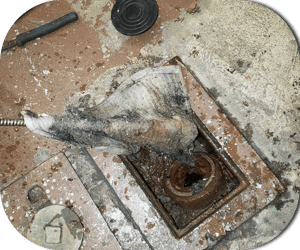Tempest Channel flushing
Sterile sewer flushing is a typical support movement used to further develop pipe water power and to eliminate contaminations in sterile sewer frameworks. The very rules that make clean sewer flushing viable can be utilized to flush tempest channels. Flushing might be intended to powerfully pass on amassed material to vital areas, for example, to an open channel, to another point where flushing will be started, or over to the clean sewer and on to the treatment offices, hence forestalling re-suspension and flood of a piece of the solids during storm occasions. Flushing forestalls “plug stream” releases of concentrated contamination loadings and silt. The stores can prevent the planned transport limit of the tempest channel framework and possibly cause backwater conditions in serious instances of obstructing. Blocked Drains Maidstone prefer a good choice for the cleaning method.
The process involves flushing

Tempest channel flushing typically happens along sections of line with grades that are excessively level to keep up with sufficient speed to keep particles in suspension. An upstream sewer vent is chosen to place an inflatable gadget that briefly plugs the line. Further upstream, water is siphoned into the line to make a flushing wave. At the point when the upstream reach of the line is adequately full to cause a flushing wave, the expanded gadget is quickly flattened with the help of a vacuum siphon, delivering the upheld up water and bringing about the cleaning of the tempest channel portion.
To additionally lessen the effects of stormwater contamination, a second inflatable gadget, put well downstream, might be utilized to re-gather the water after the power of the flushing wave has scattered. A siphon may then be utilized to move the water and amassed material to the clean sewer for treatment. At times, an interceptor construction might be more useful or needed to re-gather the flushed waters. It has been tracked down that purging proficiency of occasional flush waves is reliant upon flush volume, flush release rate, sewer incline, sewer length, sewer stream rate, sewer width, and populace thickness. As a guideline, the length of the line to be flushed ought not to surpass 700 feet. At this most extreme suggested length, the percent evacuation proficiency ranges between 65- 75% for organics and 55-65 percent for dry climate coarseness/inorganic material. The percent evacuation proficiency drops quickly past that. Water is usually provided by a water truck, however, fire hydrants can likewise supply water. To utilize water, it is suggested that recycled water be utilized or that fire hydrant line flushing agrees with storm channel flushing.
Stream The board
Stream the board has been one of the essential inspirations for planning metropolitan stream passageways before. Such necessities could conceivably be viable with the stormwater quality objectives in the stream hall. Downstream flood pinnacles can be smothered by diminishing through stream speed. This can be achieved by lessening slope with grade control structures or expanding harshness with rocks, thick vegetation, or complex banks structures. Diminishing speed correspondingly builds flood stature, so all such means have a characteristic relationship with floodplain open space. Flood rises horizontally nearby the stream can be brought down by expanding through stream speed. In any case, expanding speed builds flooding downstream and innately clashes with channel dependability and human wellbeing. Where geology allows, one more way of bringing down flood rise is to bring down the level of the floodway with drop structures into a huge however unpretentiously uncovered bowl where flood streams we permitted to fan out.

